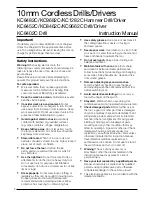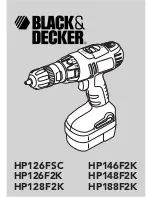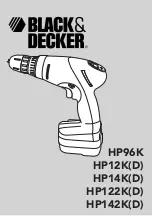
15
2. Tighten quill lock (G, Figure 8).
3. Screw micrometer nut (H
1
) against quill stop
(L), and tighten micrometer jam nut (H
2
).
4. Loosen quill lock (G), and engage auto feed
lever (E).
5. Choose downfeed rate (M).
6. Engage feed reversing knob (K).
7. Engage feed trip lever (I).
Note:
Always make a test cut to verify that depth
of cut is correct.
12.6
Mill head – left/right movement
Make sure machine base is
secured to floor before repositioning mill head.
The center of gravity can shift enough to cause
the machine to tip over, resulting in serious
injury to operator and damage to machine.
1. Loosen four large hexagonal nuts that secure
the mill head to the ram adapter (refer to
Figure 9). One-quarter (1/4) turn should be
sufficient to allow the head to move.
NOTE
: For angles greater than 10 degrees,
use your free hand to support the mill head,
taking some weight off the brass worm gears.
Doing so will greatly lengthen the life of the
worm gears.
2. Turn worm nut (B, Figure 9) to tilt head left or
right as required. Use the scale on the ram
adapter to set desired angle.
Note:
The scales on the ram adapter and for
head rotation are guides only. Close tolerance
work will require the use of a dial indicator to
make sure the head is 90° to the table in the X
and Y axis. Please note the table is fitted to be
slightly higher in front, usually about 0.0005”.
Figure 9: Mill head movement
Be sure to apply torque in two
steps using a crossing pattern. Failure to do so
could distort the face of the ram adapter.
3. Tighten the four hexagonal nuts. Tighten in
two steps using a calibrated torque wrench.
Use a crossing pattern to tighten the nuts.
Tighten initially to 25 foot-pounds.
4. Before applying final torque, check to make
sure the mill head is perpendicular to the
worktable.
5. Set up a dial indicator in a collet and secure
using the draw bar (refer to Figure 10).
Figure 10: Test perpendicularity
6. Put spindle drive in neutral.
7. Set dial indicator plunger on worktable. Zero
the indicator.
8. Rotate spindle 180 degrees (when rotating,
raise dial indicator plunger by hand to prevent
it from dropping into table T-slots).
9. Read dial indicator – it should read zero. If not,
loosen the four hex nuts and reposition the mill
head.
10. Recheck perpendicularity using dial indicator.
Repeat procedure above until dial indicator
reads zero in both positions.
Be sure to apply torque in two
steps using a crossing pattern. Failure to do so
could distort the face of the ram adapter.
11. Tighten the four hex nuts. Tighten in two steps
using a calibrated torque wrench. Use a
crossing pattern to tighten the nuts. Tighten to
a final torque of 50 foot-pounds.
Summary of Contents for JTM-1050
Page 7: ...7 6 0 JTM 1050 Installation Layout Figure 1 ...
Page 22: ...22 14 1 1 JTM 1050 Variable Speed Head Assembly Exploded View ...
Page 25: ...25 14 2 1 JTM 1050 Head Assembly Exploded View ...
Page 29: ...29 14 3 1 JTM 1050 Base Assembly Exploded View ...
Page 32: ...32 14 4 1 JTM 1050 Table Leadscrew Assembly Exploded View ...
















































